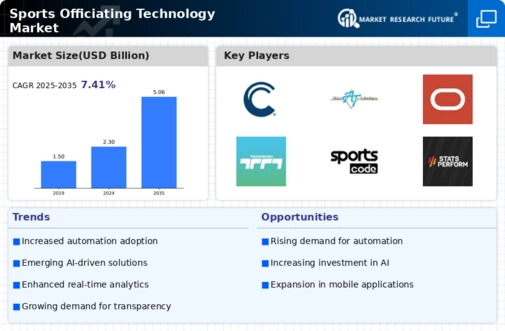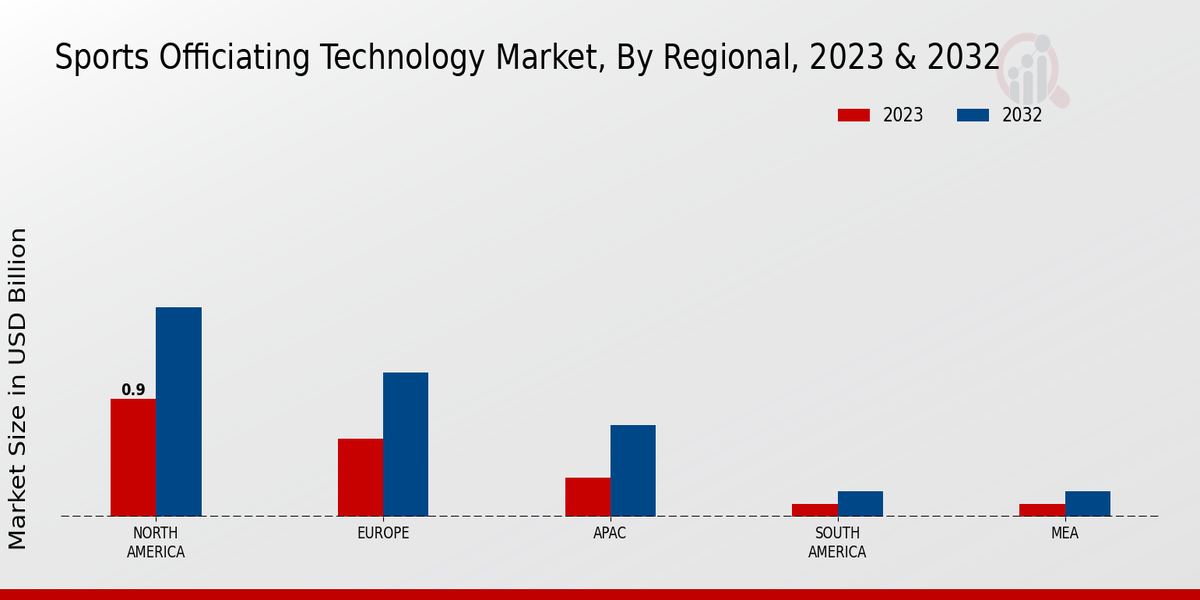Emergence of E-Sports
The Global Sports Officiating Technology Market Industry is witnessing a new dimension with the emergence of e-sports. As competitive gaming gains traction, the need for officiating technology tailored to this sector is becoming increasingly apparent. E-sports tournaments require precise officiating to ensure fair competition, leading to the development of specialized tools and systems. This burgeoning segment is attracting investments and innovations, further expanding the market's scope. The integration of officiating technology in e-sports not only enhances the gaming experience but also legitimizes competitive gaming as a recognized sport, thereby contributing to the overall growth of the officiating technology market.
Globalization of Sports
The Global Sports Officiating Technology Market Industry is also propelled by the globalization of sports. As sports gain international popularity, the need for standardized officiating practices across different regions becomes paramount. This globalization leads to increased investments in officiating technologies that can be utilized universally, ensuring consistency in rule enforcement. For example, leagues in various countries are adopting similar technologies to maintain a level playing field, which is crucial for international competitions. This trend not only enhances the market's growth potential but also fosters a more unified approach to officiating in sports worldwide.
Technological Advancements
The Global Sports Officiating Technology Market Industry is experiencing rapid growth due to continuous technological advancements. Innovations such as artificial intelligence, machine learning, and real-time data analytics are enhancing officiating accuracy and efficiency. For instance, AI-driven systems can analyze player movements and provide instant feedback, which is crucial in sports like soccer and basketball. As a result, the market is projected to reach 2.3 USD Billion in 2024, reflecting a growing demand for sophisticated officiating tools. This trend indicates that stakeholders are increasingly investing in technology to improve the integrity of sports, thereby driving the overall market forward.
Increased Demand for Fair Play
The Global Sports Officiating Technology Market Industry is significantly influenced by the rising demand for fair play and transparency in sports. Fans, players, and organizations are increasingly advocating for the use of technology to minimize human errors in officiating. This demand is evident in sports leagues adopting video assistant referee (VAR) systems and other technologies to ensure accurate decision-making. As the market evolves, it is expected to grow at a compound annual growth rate (CAGR) of 7.43% from 2025 to 2035, reaching an estimated 5.06 USD Billion by 2035. This growth underscores the commitment to maintaining the integrity of competitive sports.
Growing Investment in Sports Infrastructure
The Global Sports Officiating Technology Market Industry benefits from the growing investment in sports infrastructure. Governments and private entities are increasingly funding the development of sports facilities equipped with advanced officiating technologies. This investment is particularly evident in emerging markets, where new stadiums and arenas are being built with integrated officiating systems. Such infrastructure not only enhances the spectator experience but also ensures that officiating is conducted with the latest technological tools. As a result, the market is poised for growth, as these investments are likely to drive demand for innovative officiating solutions.


























Leave a Comment